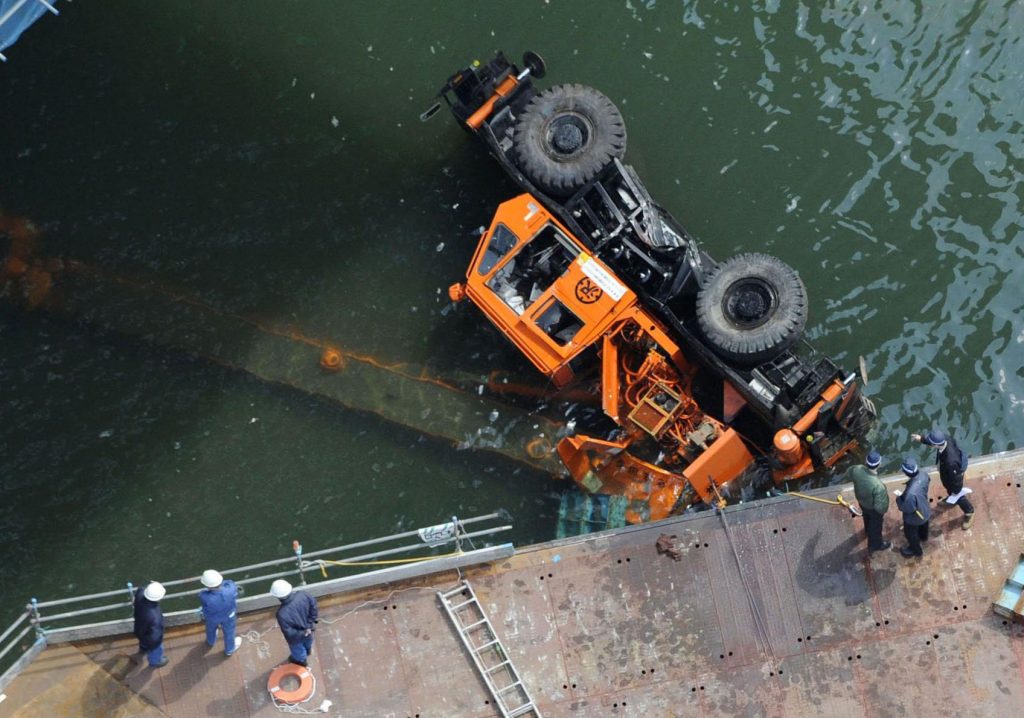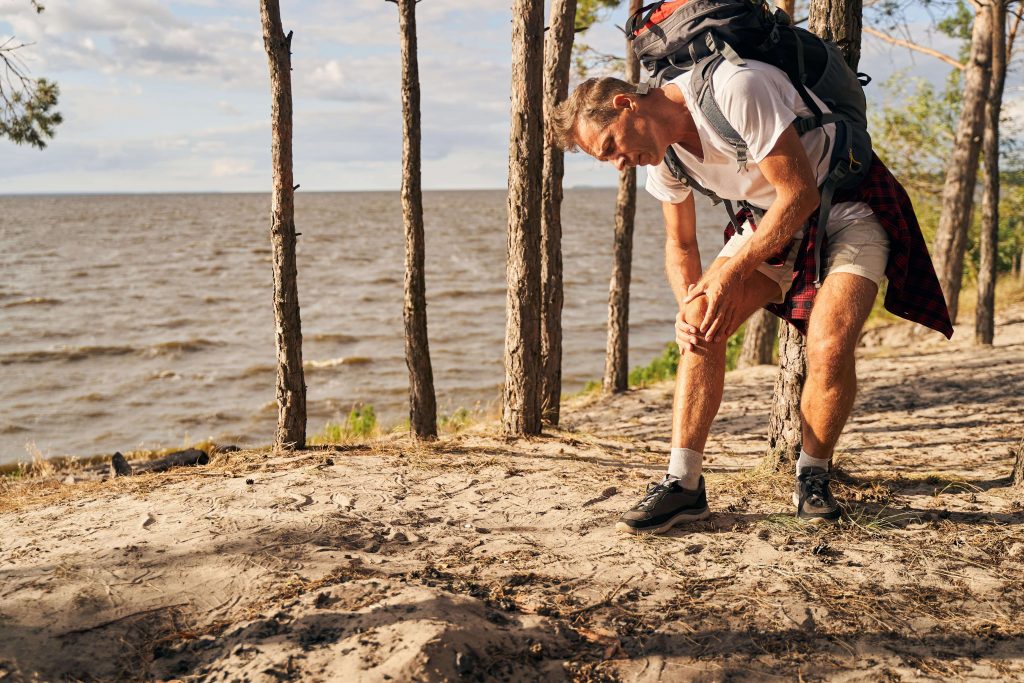Understanding Liability in Heavy Machinery Construction Accidents

Construction sites are inherently risky environments, especially when heavy machinery is involved. Accidents can lead to severe injuries, impacting not only the workers’ physical well-being but also their financial stability. If you’ve been injured in a heavy machinery construction accident, it’s essential to get in touch with a Manhattan construction accidents attorney and understand who might be liable for compensating you for your injuries. In this blog, we’ll explore the concept of liability, delve into New York’s Labor Law 240, and address the specific scenario of ladder falls from heavy machinery. Liability in Construction Accidents Liability determination in construction accidents can be challenging since several parties may be involved. The concept of liability centers around negligence or breach of duty. The liable party is the one whose negligence or failure to meet safety obligations directly led to the accident and subsequent injuries. In New York, construction workers have certain legal protections, particularly under the Labor Law 240, also known as the “Scaffold Law.” Labor Law 240 and Its Significance Labor Law 240 places a significant burden of responsibility on property owners and contractors, particularly in cases where workers are injured due to elevation-related risks. This law is designed to protect workers engaged in construction, demolition, and repair work who are exposed to the risk of falling from heights or being struck by falling objects. It places the duty to provide adequate safety measures on property owners, contractors, and their agents. When heavy machinery is involved in construction, the operators of such machinery are required to follow proper safety protocols and ensure the safety of those working in proximity. Learn about the required safety protocols from a Manhattan construction accidents attorney. Ladder Falls from Heavy Machinery Ladder falls from heavy machinery are unfortunately common occurrences in construction sites. Workers may be required to use ladders to access elevated areas on or near heavy machinery, increasing the risk of falls. In such cases, liability for injuries can extend to various parties, depending on the circumstances: Property Owners: If the property owner failed to provide proper safety measures or knowingly allowed hazardous conditions to persist, they might be held liable for injuries resulting from ladder falls. Contractors: Contractors overseeing the construction site have a duty to ensure that safety protocols are in place. If they neglect to implement appropriate safety measures or provide faulty equipment, they could be deemed responsible for injuries. Heavy Machinery Operators: Operators of heavy machinery must exercise caution and take preventive measures to ensure that workers in the vicinity are not exposed to unnecessary risks. If an operator’s negligence contributes to a ladder fall incident, they might share liability. Manufacturers: If the ladder itself was defective or malfunctioned due to a manufacturing defect, the ladder manufacturer could be held responsible for injuries sustained. Supervisors and Foremen: Those in supervisory roles are responsible for overseeing workers and ensuring that safety guidelines are followed. If they fail to provide proper instructions or neglect to address hazardous conditions, they could share liability. In a heavy machinery construction accident in New York, liability for compensating injured workers extends to a range of parties, including property owners, contractors, heavy machinery operators, manufacturers, and supervisors. Labor Law 240 places a significant emphasis on worker safety, particularly in cases involving elevation-related risks, such as ladder falls from heavy machinery. If you’ve suffered injuries in such an accident, consulting with legal professionals experienced in construction accident cases such as Manhattan construction accidents attorney from Siler and Ingber’s team is crucial to help you understand your rights and pursue the compensation you deserve. Remember, prioritizing safety on construction sites can go a long way in preventing these accidents and protecting the well-being of workers.
Unveiling New York’s Most Dangerous Jobs

with an elevated level of danger. Among these, the construction industry takes center stage, holding the spotlight as one of the most hazardous professions in New York. Every construction project poses numerous hazards, such as falls from heights, exposure to harmful substances, and potential electrical accidents. This blog delves into the dangerous jobs in the city, with a special focus on construction and the need for a construction accident lawyer New York City. Construction: High-Stakes Industry Manhattan’s iconic skyline is a testament to the constant construction and development taking place in the city. From erecting towering skyscrapers to renovating historic buildings, construction is an integral part of New York’s DNA. However, this industry comes with its own set of risks that can have devastating consequences for workers. Construction industries in New York also demand strict adherence to safety protocols and laws. The ladder law, enacted in 2002, has significantly impacted construction sites across the state. Under this legislation, employers are obligated to provide proper protection for workers who perform tasks at elevated heights using ladders or scaffolds. The ladder law places responsibility on employers to ensure that all necessary safety measures are in place, such as providing training and appropriate protective equipment, including harnesses and guardrails. Furthermore, the law holds employers liable for accidents or injuries caused by any violation of safety standards. Moreover, it is worth noting that anyone injured in a construction accident has the right to sue for compensation regardless of their citizenship status—an important protection ensuring equal access to justice for all. 1. Heights and Falls Working at dizzying heights is a daily occurrence for many construction workers in Manhattan. From steelworkers to window washers, the risk of falls is ever-present. Despite safety measures and regulations, accidents still happen, often resulting in serious injuries or even fatalities. A construction accident lawyer New York City becomes a crucial ally for workers who have suffered due to falls, helping them navigate the complex legal landscape. 2. Machinery Mishaps Construction sites are teeming with heavy machinery and equipment. While these tools are essential for getting the job done, they can also pose significant dangers. Mishandling equipment, lack of proper training, and mechanical failures can lead to accidents that result in severe injuries. 3. Collapsing Structures The ambitious construction projects in Manhattan often involve the manipulation of massive structures. These structures, if not properly supported or managed, can collapse unexpectedly, endangering the lives of workers and bystanders alike. 4. Electrocution and Burns With the extensive use of electrical systems and flammable materials on construction sites, the risk of electrocution and burns is substantial. Faulty wiring, contact with live electrical lines, or chemical accidents can lead to life-altering injuries. 5. Dealing with Toxic Substances Many construction projects involve dealing with hazardous materials such as asbestos, lead paint, and chemicals. Exposure to these substances can lead to serious health problems, including respiratory issues and even cancer. While New York City is a hub of opportunity, it’s essential to recognize the risks associated with certain jobs, especially those in the construction industry. Workers who dedicate their time and effort to building the city’s future deserve proper protection and compensation when the unexpected occurs. With the help of a Manhattan construction accidents attorney, these workers can find the support they need to rebuild their lives after a construction-related accident. As we admire the grandeur of Manhattan’s skyline, let’s not forget the individuals whose hard work and dedication often come at great personal cost. Role of a Construction Accident Lawyer In the face of these risks, workers in the construction industry need legal protection and support. A construction accident lawyer New York City such as Siler & Ingber specialize in advocating for the rights of workers who have been injured on the job. They assist in navigating workers’ compensation claims, pursuing personal injury lawsuits against negligent parties, and ensuring that victims receive the compensation they deserve for medical expenses, lost wages, and pain and suffering.
What Should You Do If Your Apartment Building Is Unsafe?

As they search for a new home, many renters worry about their safety. Older apartments could have asbestos-containing insulation or lead-based paint on the walls. In some neighborhoods, crime may also be a prevalent occurrence. There are several things tenants may do to protect themselves, even though landlords are frequently in charge of making sure their rental houses are secure. Illegal Activity and Protection Usually, the landlord is accountable for making sure there hasn’t been any criminal behavior on the rented property. The installation of a deadbolt and pin lock in the door handle is mandated by a number of municipal legislations for every apartment. This guarantees that a renter can properly safeguard their residence. Landlords may choose to implement additional security measures, such as mounting external lighting or pruning tall plants, to deter criminal behavior and improve visibility, depending on the local crime rate. Additionally, landlords are required to keep unlawful activity, such as drug dealing, out of their properties. A common clause in leases forbids engaging in any criminal activity inside the rented properties. If the landlord notices any illegal action, they have the right to evict the tenant solely on that ground. Building danger and security The building itself can be the other main danger to the security of the tenants. It’s possible that older structures don’t follow contemporary safety and building regulations. They might also include hazardous substances like lead. Typically, many states and towns demand the following of landlords: Inform tenants of any unsafe environmental conditions before they sign the rental agreement. Install specific fire exits or smoke and CO detectors in each apartment. The majority of the time, landlords must also undertake appropriate repairs to increase building safety. However, they are not obligated to make significant renovations before renting a house. What Renters May Do While it is mostly the landlord’s responsibility to ensure the apartment building is secure, there are some common sense precautions you can take on your own behalf Equip yourself with the crime rates in your area. You can assess if the property owner took enough safety precautions using this information. Check out the rental in person. You ought to enquire about the construction materials used and the date the apartment was built throughout the viewing. Examining the state of the ventilation systems, electrical outlets, and smoke alarms is also a good idea. Purchase renter’s insurance. Rental insurance policies come in a variety of forms, but they are typically inexpensive and will reimburse tenants if their property is damaged or stolen. How to defend yourself against your landlord Be aware that a landlord must give you adequate notice before entering your apartment, unless there is an emergency, and may only do so for legitimate reasons, such as the need to perform repairs, check for violations, show the flat to potential buyers, or other reasons outlined in your lease. Tenants have the right to complain to the appropriate authorities and may even pursue legal action if their landlord violates any of these rights. Learn More from a Lawyer About Landlord Liability and Tenant Safety Every renter has the right to a safe home that is uninfected by harmful criminal activities and health risks. You might wish to look into your legal options if you think your landlord has disregarded their obligation to give you a secure place to reside. You can find out if you have a strong case by consulting a neighborhood landlord-tenant lawyer. We take great pride in being the go-to source for legal resources and information here at Siler & Ingber. Call us right away!
Common Landscaping Injuries and How to Avoid Them

There are some occupations which are more dangerous than others and landscaping tops this list of the riskiest occupation. It involves many unsafe things such as working with heavy machinery, working at a tall height, using sharp objects, exposure to chemicals etc. Even though this job is riskier compared to others, there is absolutely no excuse for landscape workers to work in unreasonable dangerous conditions. There are numerous occupational hazards related to this job but there are also plenty of ways in which these injuries can be prevented before they occur. Common Landscaping Injuries Slip & Falls – from heights Heat & Cold Stress/Weather Exposure Hearing Loss – from loud equipment Contact with hazardous material – when working closely with yard care products, pesticides and other toxic materials Overexertion – from lifting heavy equipment Cuts & Amputation – from plants or equipments All these ranges from minor injuries like cuts or lacerations to death or paralysis. It is all a matter of some seconds that a minor injury could turn into something fatal. How to Avoid Landscaping Injuries Dressing for Safety For landscapers, transportation accidents were the most common kind of workplace accidents. While working, the landscapers need to ensure that they wear clothing keeping in mind their safety and visibility. For E.g. when working near the road it is advised to very bright-coloured reflective gear that will make them visible to the drivers. Eye and ear protection are also important as landscapers often work with machines that produce high levels of noise and might kick debris into your eye while working. Loose clothing is recommended while on the job to avoid heating up the body, too loose clothes should also be avoided as they can get caught in the machinery. Machinery Training & Maintenance Equipments, tools and machines are a vital part of a landscaper’s job and it is very essential that they be maintained properly and the workers are trained on how to use them safely. There are some equipments like blowers, mowers and chippers that are often used by landscapers and are potentially very dangerous if not used in the right manner. Regular maintenance of tools can not only make tasks easier but also prevents injuries caused by an equipment malfunction. Keeping Track of the Weather Landscaping is one of those jobs where the professionals do not get the benefit of working in a climate-controlled setting or even indoors which is in itself a tough situation to deal with. To avoid any kind of weather-related hazards, one must monitor the weather forecasts closely so that appropriate safety measures can be taken. Taking Precautions While Using Hazardous Chemicals Landscapers have to use chemical products like pesticides which can cause various health issues if not used with proper precautions. The safety measures to be taken vary from product to product; hence workers need to be trained for it. Contact Workplace Injury Attorney in New York If you have been injured at work then after seeking medical help the next important thing that you need to do is, contact a workplace injury lawyer who can help you file for compensation. At Siler & Ingber, you will be able to talk to the most experienced and skilled attorneys in New York. To get started with your case evaluation, contact Siler & Ingber today.

